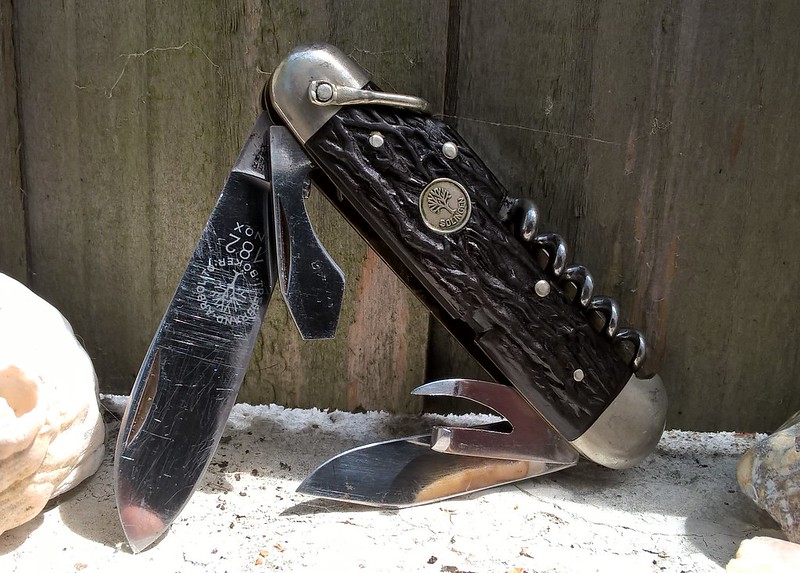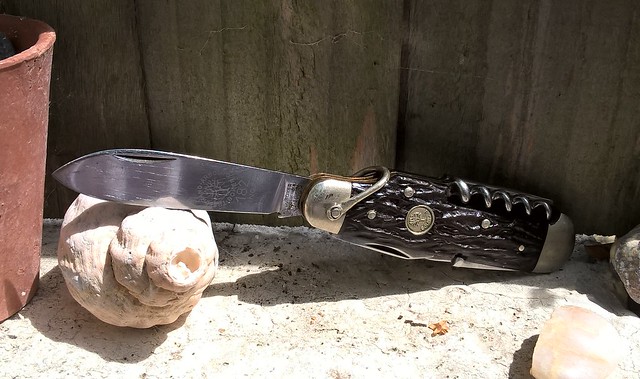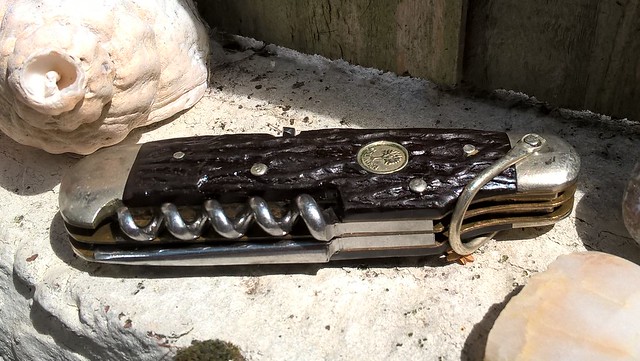- Joined
- Mar 28, 2015
- Messages
- 726
Went along bright and early to my first boot sale for ages last Sunday. On the fourth or fifth stall I came to, placed on the ground, lay two knives. One was clearly of no consequence but the other, though filthy with oil and grime, immediately felt good in the hand. On wiping the muck from the badge I was able to make out the Treebrand insignia and the word Solingen. The guy on the stall seemed eager to get the deal done, explaining that he shouldn't really be selling them. He quickly gave me a price of £2.00 on the knife to which I hastily agreed. I made my way around the rest of the sale twice that morning making a thorough sweep of the place, but nothing else was to be found. Upon further inspection back at the car I noticed that the main blade on the knife carried not only the Treebrand name, the word 'Arbolito' and the number 182, but also the name Boker. It was beginning to dawn on me that I had found something quite interesting. Later that afternoon I gave it the usual soapy water and WD40 treatment and, though scratched on the main blade with some wear to the nickel bolsters, the quality and beauty of the knife soon became apparent. I've since done some cursory research and realise that the 182 does have it's place in camp knife history and that my one seems to be one of the older models with its older style tin opener. Needless to say I'm very pleased with my find and would be greatfull for any additional information if anyone has any. Many thanks.  :thumbup:
:thumbup:
- Mark
 Untitled by Blake Blade, on Flickr
Untitled by Blake Blade, on Flickr Untitled by Blake Blade, on Flickr
Untitled by Blake Blade, on Flickr Untitled by Blake Blade, on Flickr
Untitled by Blake Blade, on Flickr Untitled by Blake Blade, on Flickr
Untitled by Blake Blade, on Flickr
- Mark
 Untitled by Blake Blade, on Flickr
Untitled by Blake Blade, on Flickr Untitled by Blake Blade, on Flickr
Untitled by Blake Blade, on Flickr Untitled by Blake Blade, on Flickr
Untitled by Blake Blade, on Flickr Untitled by Blake Blade, on Flickr
Untitled by Blake Blade, on Flickr
Last edited:
